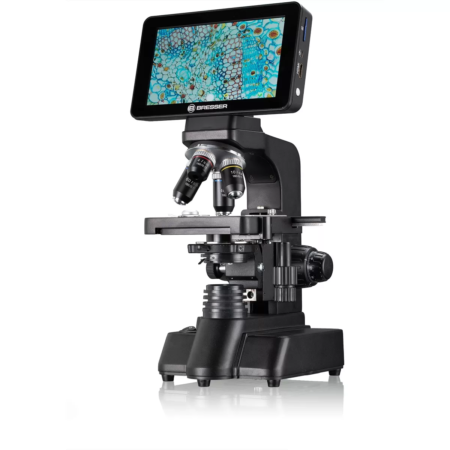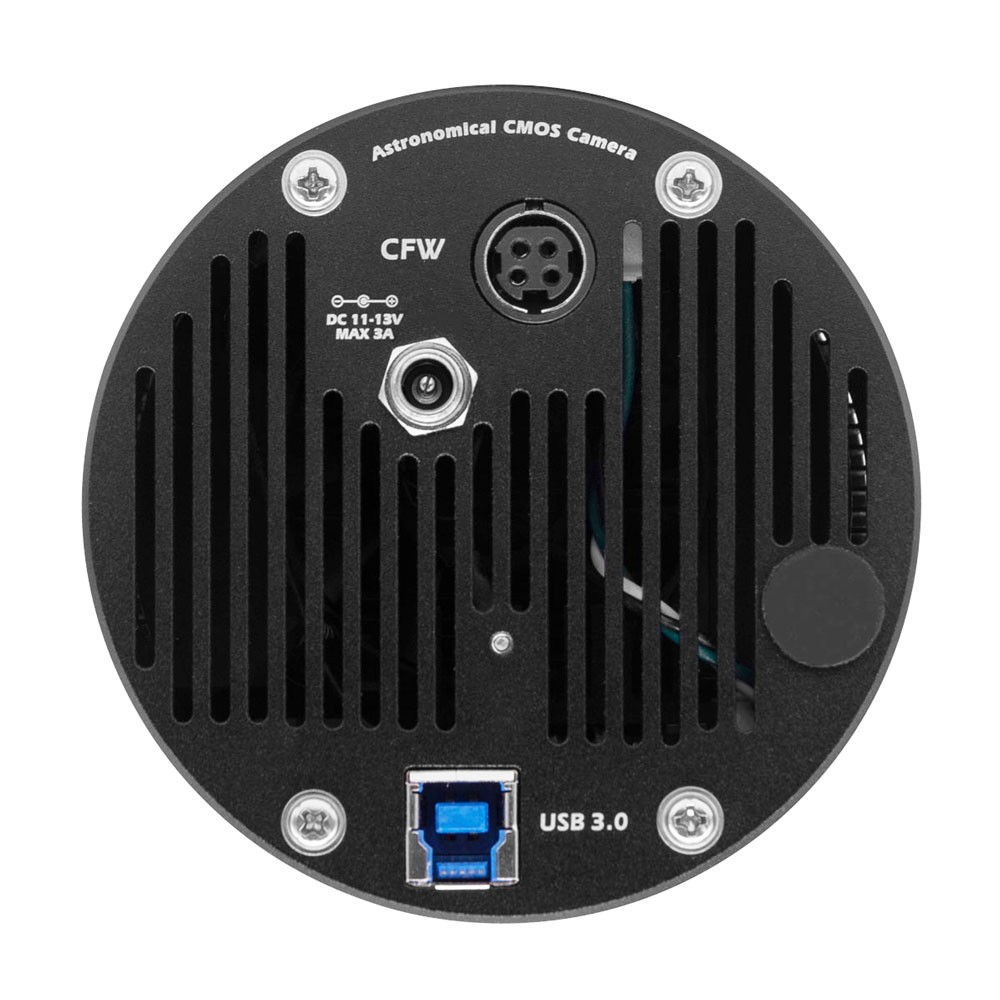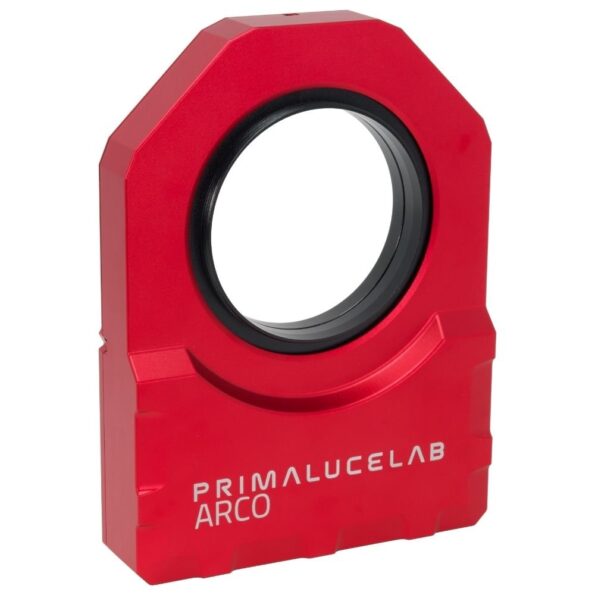Key Features
- High resolution, cooled full frame CMOS color camera with Sony IMX 410 Back Illuminted Sensor (BSI)
- Effective Pixel Area: 6072 (Horizontal) x 4044 (Vertikal), Pixelsize 5.94 μm x 5.94 μm
- Effective Image Area: 24 x 36mm, diagonal 43,3mm
- QE approx. 80%
- Best Match for Longer Focal Length
- AD Sample Depth: 14bit (output as 16bit and 8bit)
- Dark Current: 0.01e/pixel/sec@ 0C, 0.002e/pixel/sec@ -20C
- Full Well: 120 ke-
- Built-in Image Buffer: 1 GByte DDR3
- Non-volatile built-in memory 512kbytes
- Rolling Shutter
- Exposure time: 100 µs up to 3600 seconds
- Cooling System: Dual Stage TEC cooler(-35C below ambient*)
- Anti-Dew Heater
- Silicon Gel Socket
- Telescope Interface: M54/0.75 Female Thread on the fast installer/center adjust ring
- Currently only available as color version
Description
QHY410C uses Sony’s latest back-illuminated, full frame color sensor. The IMX410 is equipped with the sensor that used in the Nikon Z6, and Sony A7III. In addition to BSI, the IMX410 also has larger 5.94 um pixels giving it increases sensitivity of extended objects in low light. The IMX410 is expected to be Sony’s most sensitive full frame color sensor for astrophotography.
QHY410C has 1GB DDRIII buffer to cache the image and avoid the risk of a frame loss. This avoids problems of a busy USB port when there are other peripherals using the same port as the camera.
One benefit of the back-illuminated CMOS structure is improved full well capacity. In a typical front-illuminated sensor, photons from the target entering the photosensitive layer of the sensor must first pass through the metal wiring that is embedded just above the photosensitive layer. The wiring structure reflects some of the photons and reduces the efficiency of the sensor.
In the back- illuminated sensor the light is allowed to enter the photosensitive surface from the reverse side. In this case the sensor’s embedded wiring structure is below the photosensitive layer. As a result, more incoming photons strike the photosensitive layer and more electrons are generated and captured in the pixel well. This ratio of photon to electron production is called quantum efficiency. The higher the quantum efficiency the more efficient the sensor is at converting photons to electrons and hence the more sensitive the sensor is to capturing an image of something dim.
TRUE RAW Data
In the DSLR implementation there is a RAW image output, but typically it is not completely RAW. Some evidence of noise reduction and hot pixel removal is still visible on close inspection. This can have a negative effect on the image for astronomy such as the “star eater” effect. However, QHY Cameras offer TRUE RAW IMAGE OUTPUT and produces an image comprised of the original signal only, thereby maintaining the maximum flexibility for post-acquisition astronomical image processing programs and other scientific imaging applications.
Anti-Dew Technology
Based on almost 20-year cooled camera design experience, The QHY cooled camera has implemented the fully dew control solutions. The optic window has built-in dew heater and the chamber is protected from internal humidity condensation. An electric heating board for the chamber window can prevent the formation of dew and the sensor itself is kept dry with our silicon gel tube socket design for control of humidity within the sensor chamber.
Cooling
In addition to dual stage TE cooling, QHYCCD implements proprietary technology in hardware to control the dark current noise.

Photographer: Terry Hancock
Imaging cameras: QHYCCD QHY410C
Imaging telescopes : Takahashi Epsilon E180
| Model | QHY410C |
| COMS Sensor | SONY IMX410 |
| Mono/Color | Color |
| FSI/BSI | BSI |
| Pixel Size | 5.94um*5.94um |
| Effective Pixel Area | 6072* 4044 |
| Effective Pixels | 24.5 MP |
| Sensor Size | Full Frame
36mm* 24mm |
| Fullwell | 120ke- |
| AD Sample Depth | 14bit (Output as 16bit and 8bit) |
| Full Frame Rate | 14 FPS @8BIT
7 FPS @16BIT |
| Readout Noise | 3.75e- @low gain
1.1e- @high gain |
| Dark Current | 0.01e /pix/s @0C
0.002e /pix/s @-20C |
| Exposure Time Range | 100us-3600sec |
| Unity Gain | 90(low gain)
40 (high gain) |
| Amp Glow | Zero Amp |
| Shutter Type | Electric Rolling Shutter |
| Computer Interface | USB3.0 |
| Built-in Image Buffer | 1GByte(8Gbit) |
| Cooling System | Dual Stage TEC cooler(about -35C below ambient)
(Test temperature +20°) |
| Optic Window Type | AR+AR High Quality Multi-Layer Anti-Reflection Coating (For color camera user need to add a UV/IR filter in the light path) |
| Anti-Dew Heater | Yes |
| Telescope Interface | M54/0.75 |
| Back Focal Length | 17.5mm |
| Weigth | 785g |
| Reference Price | USD3695 |
Mechanical Dimensions
Curves





Reviews
Recommended

- In Stock



















0.0 Average Rating Rated (0 Reviews)